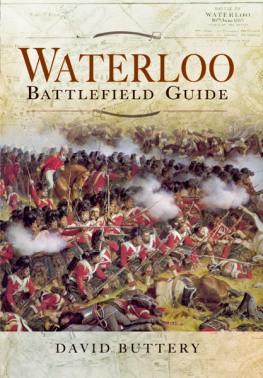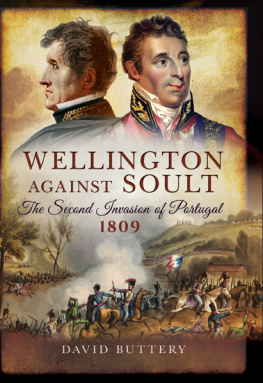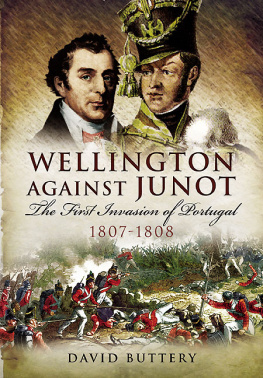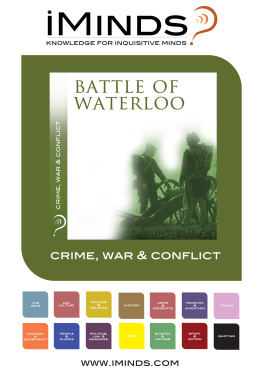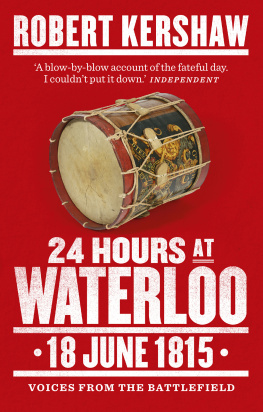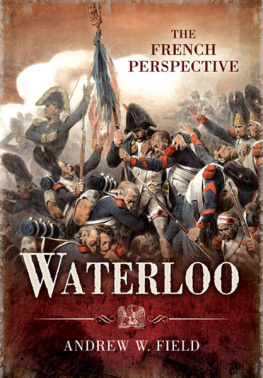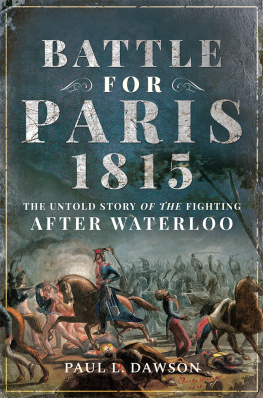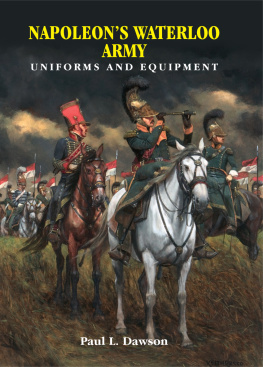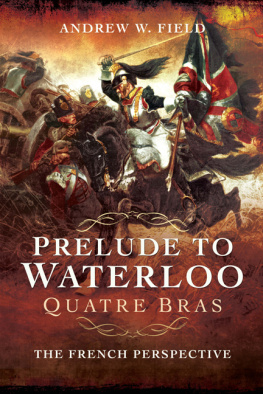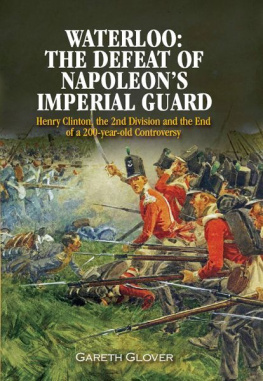First published in Great Britain in 2013 by
PEN & SWORD FAMILY MILITARY
an imprint of
Pen & Sword Books Ltd
47 Church Street
Barnsley
South Yorkshire
S70 2AS
Copyright David Buttery 2013
ISBN 978 1 78159 121 5
EPUB ISBN: 978 1 47382 229 0
PRC ISBN: 978 1 47382 181 1
The right of David Buttery to be identified as Author of this Work has been asserted
by him in accordance with the Copyright,
Designs and Patents Act 1988.
A CIP catalogue record for this book is
available from the British Library.
All rights reserved. No part of this book may be reproduced or transmitted in any form or by
any means, electronic or mechanical including photocopying, recording or by any
information storage and retrieval system, without permission from the Publisher in writing.
Typeset in Palatino and Optima by
Phoenix Typesetting, Auldgirth, Dumfriesshire
Printed and bound in India by
Replika Press Pvt. Ltd
Pen & Sword Books Ltd incorporates the imprints of
Pen & Sword Aviation, Pen & Sword Family History, Pen & Sword Maritime, Pen &
Sword Military, Pen & Sword Discovery, Wharncliffe Local History, Wharncliffe
True Crime, Wharncliffe Transport, Pen & Sword Select, Pen & Sword Military
Classics, Leo Cooper, The Praetorian Press, Remember When, Seaforth Publishing
and Frontline Publishing
For a complete list of Pen & Sword titles please contact
PEN & SWORD BOOKS LIMITED
47 Church Street, Barnsley, South Yorkshire, S70 2AS, England
E-mail:
Website: www.pen-and-sword.co.uk
CONTENTS
ACKNOWLEDGEMENTS
I would like to thank a number of people and organizations for their help during the writing of this guidebook. Pauline Buttery, Bert Godley and Stuart Hadaway provided invaluable assistance by proof reading my work, in addition to Pen & Swords official readers, who also provided sterling service. I would like to thank Stuart for his companionship during my most recent trip to Waterloo and for his good advice as a fellow historian and Waterloo enthusiast.
David Charlton, of the University of Leicesters David Wilson Library, provided me with every assistance during research and I thank the National Army Museum and Colindale Newspaper Archive for access to material that proved very useful. Douglas Austin and Alex Sim also deserve a mention for their knowledgeable counsel on several occasions. Finally, I would like to express my gratitude to Rupert Harding for being so patient during this long-term assignment and for asking me to undertake the project in the first place.
KEY TO MAP SYMBOLS
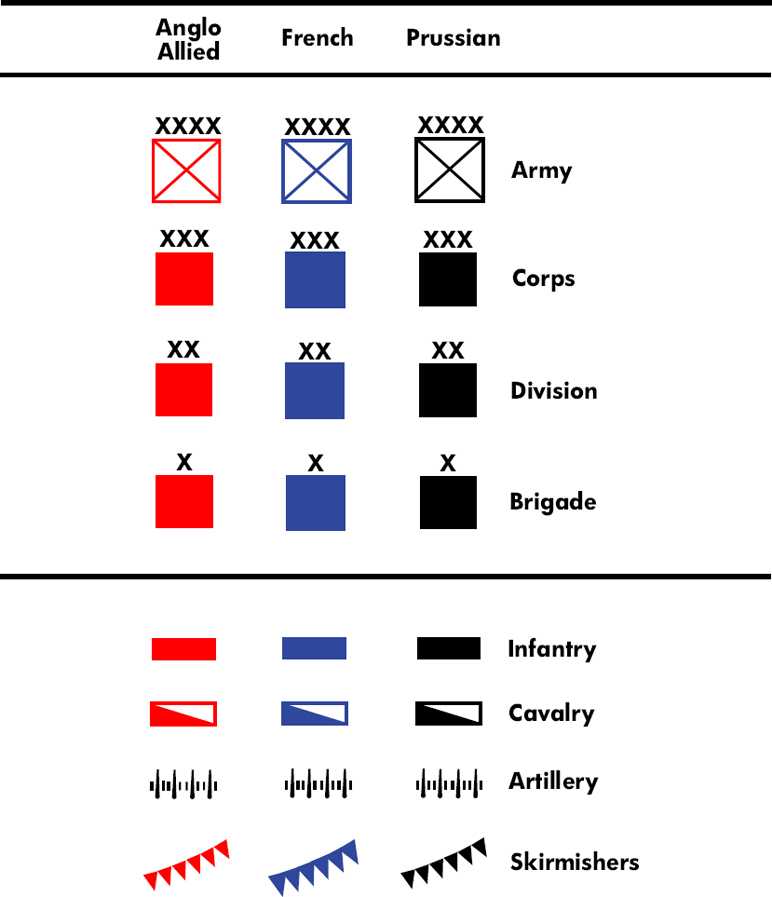
This book is dedicated to the brave men on both sides who fought at Waterloo almost 200 years ago
Introduction
THE MOST FAMOUS OF BATTLES
Visiting battlefields has become an increasingly popular activity over the last few decades and there are many reasons for this trend. Interest in the past has never been greater and many wish to commemorate the achievements and sacrifices made by their ancestors among other considerations. As the politics and events of today are shaped by past conflicts, interpreting why battles were fought, along with who won and them and why, is essential for gaining a thorough understanding of history. Indeed, while some view military history as a narrow and specialized field, it is impossible to comprehend political and social changes in the world without reference to military history.
Waterloo is one of the most famous battles to take place in the last 500 years and so its impact on European and world history is worthy of careful study. It was a decisive battle in that it ended a long series of wars that had plunged Europe into a maelstrom of bloodshed and destruction spanning two decades (17921815). The great historian David Chandler wrote that: In the long history of Western civilisation, probably only Zama (202 BC) and Tours (AD 732) have proved of equal importance, and only Gettysburg has been written about as often. His point is supported by the fact that Waterloo attracts around 300,000 tourists every year.
The magnetic appeal of the famous personalities concerned also ensures that Waterloo continues to fascinate enthusiasts 200 years on. The mystique surrounding Emperor Napoleon I of France is enough to draw admirers and critics alike to visit the place where he met his final defeat, a loss that did nothing to diminish his growing legend. His principal opponent, Arthur Wellesley, First Duke of Wellington, also occupies a unique place in military history and the fact that these two commanders adopted different approaches to warfare has intrigued historians ever since their confrontation on this battlefield.
This was also a multinational battle, concerning three main armies composed of soldiers from many European nations. The Prussian Army played a valiant role during the 1815 campaign under Marshal Blcher, although historians occasionally downplay his armys contribution at Waterloo. He was a tactician rather than a strategist and was somewhat overshadowed by the talented commanders of the other two armies involved. Among the lesser ranks who fought at Waterloo (from generals down to private soldiers) were men who had become famous in their own lifetime and it was here that veterans of twenty years of almost uninterrupted warfare converged for the climactic struggle. Great military reputations were made at Waterloo, a battle where many displayed incredible courage during continuous fighting that lasted over 9 hours.
Modern historians who make a study of Waterloo are confronted with a bewildering multitude of accounts from participants, contemporary observers and historians. Many incidents during the battle have gained an almost mythical status and, when these are challenged, provoke howls of outrage from traditionalists. The fame of such incidents in themselves, such as the closing of the gates at Hougoumont, makes a visit to the battlefield even more intriguing for visitors, but this is the case with many locations where such events have taken place.
Although considerable literature exists about the battle, many works are far from objective as it is difficult to set national and political considerations aside when historians hail from countries directly involved in the campaign. Some British historians tend to overemphasize the heroism of British soldiers and gloss over the contribution of their allies. This can be traced back to the immediate reaction after the overwhelming victory at Waterloo, which was welcomed with relief after many years of war. William Makepeace Thackeray, who used Waterloo as a focal point in his novel Vanity Fair, visited the battlefield in the 1840s and his writing typifies the patriotic feeling of the time:
Let an Englishman go and see that field, and he never forgets it. The sight is an event in his life; and, though it has been seen by millions of peaceable gents grocers from Bond Street, meek attorneys from Chancery Lane, and timid tailors from Piccadilly I will wager that there is not one of them but feels a glow as he looks at the place, and remembers that he, too, is an Englishman.
Thackeray gives a good impression here of how strongly Victorian society felt about this victory and many of his contemporaries made a pilgrimage to see the battlefield for themselves. However, his prose would have been more accurate had it referred to Britons rather than Englishmen, since Wellingtons Anglo-Allied Army contained many Scots, Irish and Welsh soldiers. Yet even that consideration fails to reflect the international make-up of the Anglo-Allied Army, two-thirds of whom hailed from Hanover, Belgium and Holland, along with other national groups.
Next page
